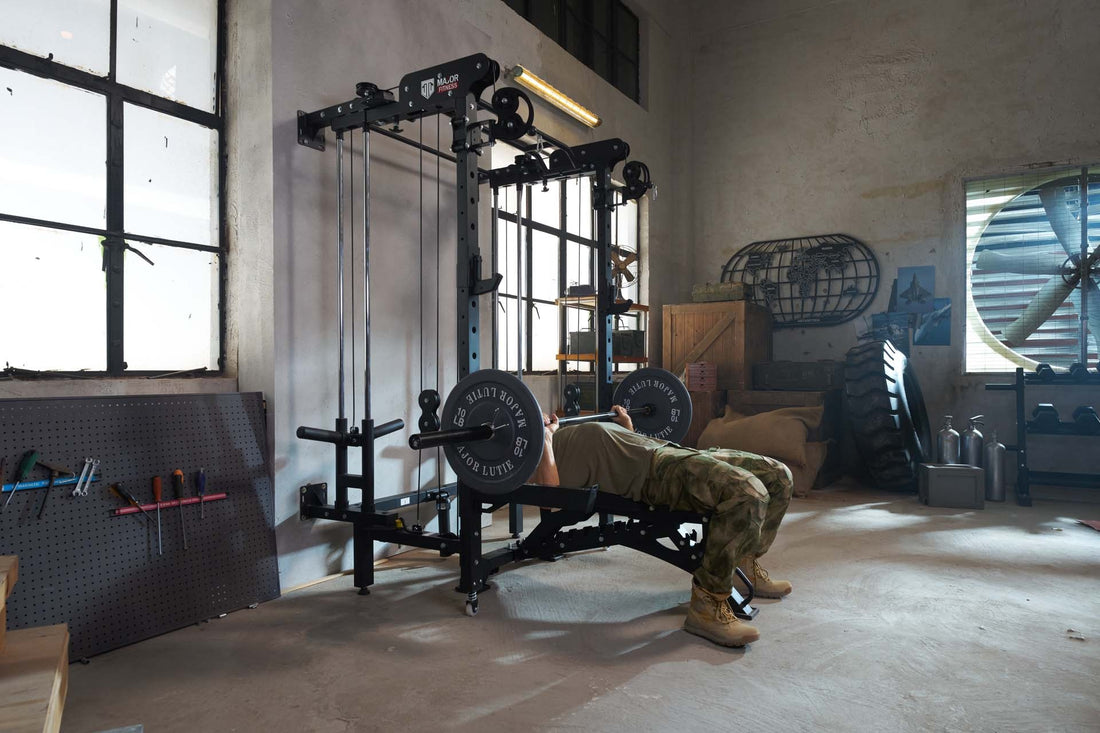
When it comes to building upper body strength, the debate between the close grip bench press vs normal bench press is often a hot topic among fitness enthusiasts. Both exercises are staples in any strength training routine, but they offer distinct benefits and target different muscle groups. So, how do you decide which one to incorporate into your workout program? Let's delve into the mechanics, benefits, and considerations of each exercise to help you make an informed decision.
The Mechanics of the Normal Bench Press
The normal bench press is a compound exercise that primarily targets the pectoral muscles, triceps, and anterior deltoids. Here’s how to perform it:
- Lie on a flat bench with your feet firmly planted on the ground.
- Grip the barbell with your hands placed slightly wider than shoulder-width apart.
- Unrack the barbell and lower it to your chest, ensuring that your elbows form a 90-degree angle.
- Press the barbell back up to the starting position, fully extending your arms.
This exercise is excellent for overall chest development and is a benchmark for measuring upper body strength. The wider grip allows for greater pectoral activation, making it a go-to exercise for those looking to bulk up their chest.

The Mechanics of the Close Grip Bench Press
On the other hand, the close grip bench press shifts the emphasis towards the triceps and inner chest. Here’s how to execute it:
- Lie on a flat bench with your feet firmly planted on the ground.
- Grip the barbell with your hands placed closer together, usually around shoulder-width or slightly narrower.
- Unrack the barbell and lower it to your chest, keeping your elbows tucked in close to your body.
- Press the barbell back up to the starting position, ensuring full extension of your arms.
This variation is particularly effective for those looking to improve their tricep strength and overall arm definition. The closer grip reduces the load on the shoulder joints, making it a safer option for individuals with shoulder issues.
Benefits of the Normal Bench Press
The normal bench press offers several advantages that make it a cornerstone of most strength training programs:
- Chest Development: The wider grip targets the pectoral muscles more effectively, leading to increased chest size and strength.
- Functional Strength: This exercise mimics everyday pushing movements, making it highly functional.
- Versatility: It can be performed on a flat, incline, or decline bench to target different parts of the chest.
Benefits of the Close Grip Bench Press
The close grip bench press isn't just a tricep exercise; it offers a range of benefits:
- Tricep Activation: The narrower grip places more stress on the triceps, leading to greater muscle hypertrophy.
- Shoulder Safety: The reduced range of motion and closer grip can alleviate shoulder stress, making it a safer alternative for those with shoulder problems.
- Variety: Incorporating this variation can add diversity to your workout routine, preventing plateaus.
Drawbacks to Consider
Both exercises have their limitations:
- Normal Bench Press: This exercise can place a significant load on the shoulder joints and rotator cuffs, increasing the risk of injury.
- Close Grip Bench Press: While excellent for tricep development, it may not be as effective for overall chest growth compared to the normal bench press.
When to Use Each Exercise
So, when should you opt for the close grip bench press vs normal bench press? Here are some guidelines:
- If your primary goal is to build a massive chest, the normal bench press should be your go-to exercise.
- If you aim to enhance your tricep strength and definition, the close grip bench press is more beneficial.
- For those dealing with shoulder issues, incorporating the close grip bench press can provide a safer alternative while still offering significant benefits.

Incorporating Both for Maximum Gains
Why choose one when you can reap the benefits of both? A balanced strength training program should incorporate both the close grip bench press and the normal bench press. This approach not only targets multiple muscle groups but also prevents muscle imbalances and reduces the risk of overuse injuries.
Consider alternating between these two exercises within your weekly routine. For example, you might perform the normal bench press on your chest-focused day and the close grip bench press on your tricep or upper body day. This strategy ensures that you’re maximizing muscle activation while giving each muscle group adequate time to recover.
Final Thoughts
Navigating the world of strength training can be complex, but understanding the unique benefits of the close grip bench press vs normal bench press can significantly enhance your workout regimen. Whether you're aiming for massive chest gains or killer triceps, incorporating both exercises into your routine will offer a well-rounded approach to upper body development. Remember, consistency and proper form are key. So, why not start today and experience the transformative power of these two effective exercises? Your future, stronger self will thank you.



















